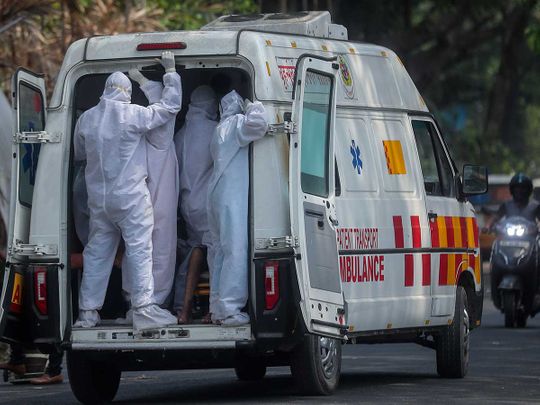
Do you remember what it was like to sit down for dinner in a crowded restaurant or a bar, with no worries about masks? Or to send your children to school and have their friends over? Or to travel and explore the world with a sense of adventure and just a valid visa?
Or even to be able to meet family and friends without worrying about social distancing? Or going to the office everyday, meeting colleagues over lunch and coffee? These are the things we took for granted before COVID.
Will life ever go back to what was the pre-COVID “normal”? Or has the pandemic created a new normal that we will end up living with for the foreseeable future, perhaps even the next few years?
Outbreaks, lockdowns and restrictions
As we deal with one wave after another, it is increasingly looking like the latter. None of us imagined when the pandemic began in early 2020, that a year and half later we would still be struggling with outbreaks, lockdowns and travel restrictions.
The whole world is dealing with new waves and surging cases largely fuelled by the highly contagious Delta variant. COVID cases have risen by 500 per cent in the Netherlands in the past week after restrictions were completely lifted. The surge forced the Prime Minister to apologise and reintroduce curbs.
Australia is imposing new lockdowns after fresh outbreaks while the country’s sluggish vaccination drive has come under severe criticism. The UK is bizarrely getting ready to remove all restrictions on July 19 including making masks voluntary.
This is despite rising COVID cases over the last few weeks though hospitalisation haven’t been as high, thanks to the country’s vaccine programme. But the images of thousands without masks at Wimbledon and Wembley recently makes one dread what lies ahead. The US is also seeing a surge thanks to the Delta variant.
Tardy vaccination programme
India’s vaccination programme meanwhile is lagging behind. The government has set an ambitious target to vaccinate all adults by the end of 2021.
Data put out by NDTV shows that to vaccinate 60 per cent of India’s population by the end of December, in order to stop another wave, we need to be administering 8.8 million shots a day. But last week’s average was just 3.8 million vaccines a day.
A political blame game and finger pointing between states and the centre isn’t helping. Most countries closed their borders either partially or fully after the pandemic struck. Some like Australia have no plans to reopen their borders till the middle of the 2022 at least.
They have even made it excruciatingly difficult for their own citizens to come back home. Other countries like the UK have long lists of countries on red, amber or green lists to decide on who can travel without quarantine.
India continues to be on the UK’s red list after the horrific COVID wave in April ripped through the country. Some countries in the EU have loosened restrictions for travel from India but most still don’t allow tourists. Neither does the UK. Those that do eventually, may insist on proof of travellers having been double vaccinated.
In any case, while COVID numbers in India are dramatically down from the highs of April, they are not falling below 35-40,000 cases a day, and the dreaded R rate, which shows the rate at which the infection is spreading, has shown a slight upward tick. This is leading to fears of a third wave sooner than later and it appears India won’t be taken off many other travel restrictions any time soon.
Crowded hill stations
The Home Ministry has sent a warning to states about the increasing R number urging them to be as cautious as possible. But are people listening? If you see photos of hill stations like Shimla and Mussoorie, a shiver of fear should run through you.
Massive crowds, no masks. It’s a recipe for disaster. Schools and education have taken a huge hit in the last year and half, and most kids won’t be seeing the inside of a classroom for some time to come.
Digital learning simply isn’t the same and in India, where many don’t have access to the internet and fancy gadgets, the pandemic has only highlighted the digital divide.
Until we vaccinate children in large numbers, this won’t change and we have not even begun that process in India. The mental health toll the pandemic has taken on many of us is another offshoot of this crisis. Loneliness and anxiety have been massively triggered by lockdowns and general worries about COVID and its impact.
Non-COVID diseases have not got as much attention and as a result people have not been able to go to regular chemotherapy sessions or even regular screenings to the doctor.
How does one even quantify the long-term impact of something like this? Like most others, I long for a quick return to the “normal” that we knew. Sure, we’ve made massive progress too especially with the development of life saving vaccines in record breaking time but it will take years to vaccinate large populations.
The fight back against COVID will be slow and long. Till then, hold on to what is precious to you.









